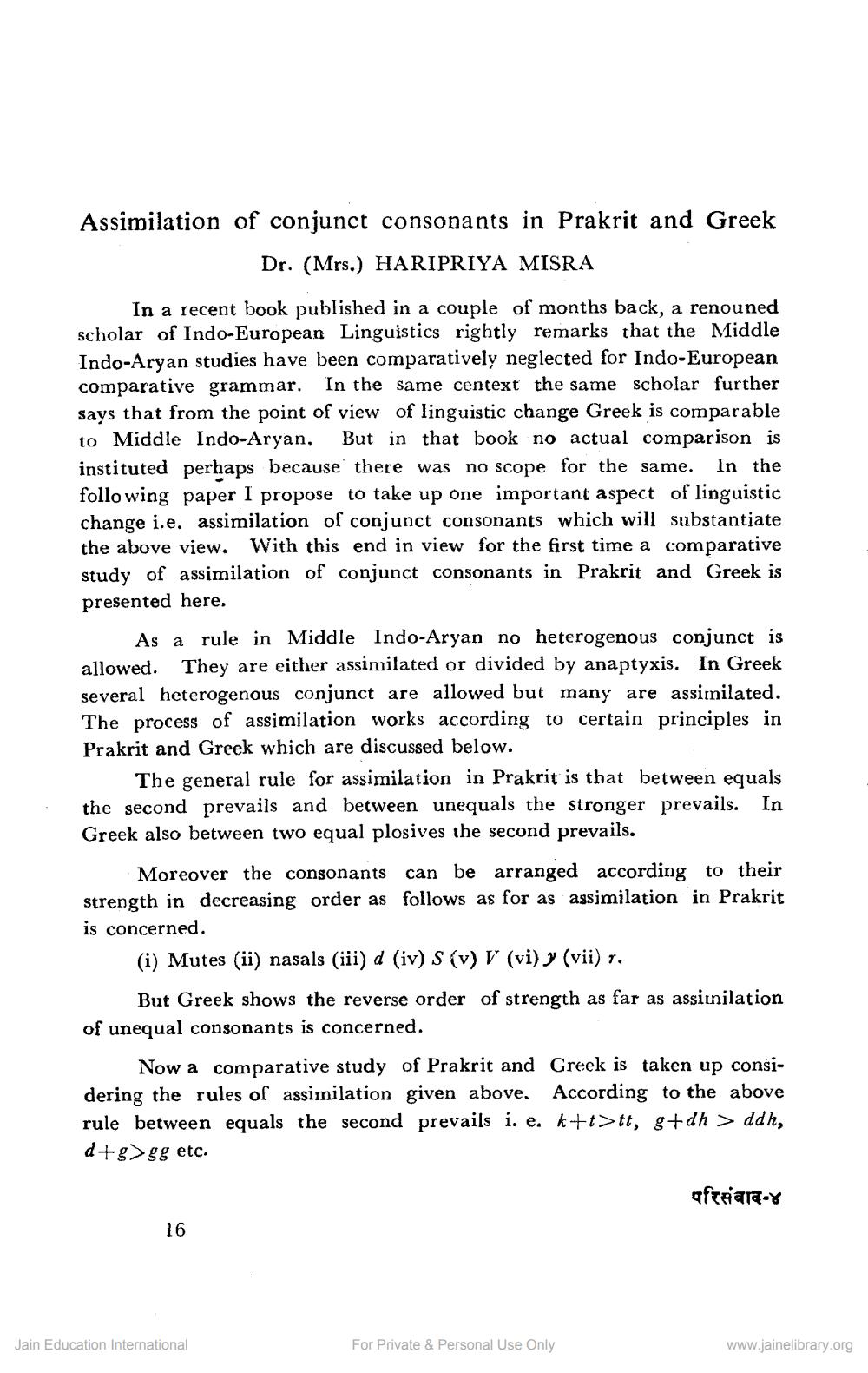Book Title: Assimilation Of Conjuct Consonants In Prakrit And Greek Author(s): Haripriya Mishra Publisher: Z_Jain_Vidya_evam_Prakrit_014026_HR.pdf View full book textPage 1
________________ Assimilation of conjunct consonants in Prakrit and Greek Dr. (Mrs.) HARIPRIYA MISRA In a recent book published in a couple of months back, a renouned scholar of Indo-European Linguistics rightly remarks that the Middle Indo-Aryan studies have been comparatively neglected for Indo-European comparative grammar. In the same centext the same scholar further says that from the point of view of linguistic change Greek is comparable to Middle Indo-Aryan. But in that book no actual comparison is instituted perhaps because there was no scope for the same. In the following paper I propose to take up one important aspect of linguistic change i.e. assimilation of conjunct consonants which will substantiate the above view. With this end in view for the first time a comparative study of assimilation of conjunct consonants in Prakrit and Greek is presented here. As a rule in Middle Indo-Aryan no heterogenous conjunct is allowed. They are either assimilated or divided by anaptyxis. In Greek several heterogenous conjunct are allowed but many are assimilated. The process of assimilation works according to certain principles in Prakrit and Greek which are discussed below. The general rule for assimilation in Prakrit is that between equals the second prevails and between unequals the stronger prevails. In Greek also between two equal plosives the second prevails. Moreover the consonants can be arranged according to their strength in decreasing order as follows as for as assimilation in Prakrit is concerned. (i) Mutes (ii) nasals (iii) d (iv) S (v) V (vi) y (vii) r. But Greek shows the reverse order of strength as far as assimilation of unequal consonants is concerned. Now a comparative study of Prakrit and Greek is taken up considering the rules of assimilation given above. According to the above rule between equals the second prevails i. e. k+t>tt, g+dh > ddh, d+g>gg etc. Scording to the solution परिसंवाद-४ 16 Jain Education International For Private & Personal Use Only www.jainelibrary.orgPage Navigation
1 2 3 4
